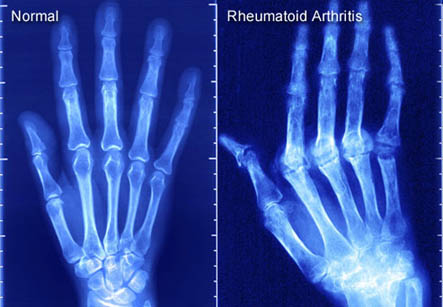Rheumatoid Arthritis
Introduction
Stem cell therapy has been in therapeutics for couple of years. Stem cells are used to repair damaged or dying tissue due to injury, disease or ageing. Stem cell therapy has immense potential in treating autoimmune disorders like rheumatoid arthritis. Stem cell therapy not only provide source of new cells but also stimulate power of regeneration of human body.
Iranian scientists have moved to the forefront in embryonic stem cell research, according to a recent joint study by Harvard University and the Massachusetts Institute of Technology

Treatment
Rheumatoid arthritis is a disease of the immune system. In this disease there is chronic inflammation of the small joints like feet, hands and knee. This disease usually affects elderly people aged between 40 to 60 years. Several new modes of treatment have been adopted for treating rheumatoid arthritis in recent years. Stem cell therapy appears to be a new breakthrough in this regard. In rheumatoid arthritis stem cell therapy is considered in following conditions:
• Resistance to normal treatment and relentless progress of the disease
• Marked decrease in functions of the joints leading to severe disability
• Complications of rheumatoid arthritis leading to total joint destruction
Stem cells have the capability to transform in different cells like skin, heart, cartilage or bone etc. In this procedure stem cells from patient’s body are taken out from blood or bone marrow. They may also be obtained from umbilical cord blood of babies after birth. These cells are them grown and cultured in the laboratory.
Stem cell therapy offers multiple advantages to a patient with rheumatoid arthritis.
They are coaxed to become the joint cartilage or bone cells in the laboratory. Later these cells are injected near or into the area of diseased joint. These cells are able to modify or repair the damaged tissues. This leads to improvement in mobility and decrease in stiffness and pain. Within initial few days of transplantation there is decreased weakness, increased mobility of joints, improved appetite and normalization of sleep. By three months there is decreased morning stiffness, oedema and joint tenderness. It serves as a type of regenerative therapy that provides adequate relief with minimal or no side effects. The stem cells must be introduced into the patient’s body by a skilled and experienced doctor.
Stem cell therapy offers multiple advantages to a patient with rheumatoid arthritis. There is
• No requirement to suppress the immune system of the a patient
• Relief from inflammation and pain
• Improved mobility of joints
• Faster recovery time
• Minimal of no side effects
• Considerable decrease in dose requirement of drugs like pain killers.
• Improved quality of life
This said, it must be remembered that stem cell therapy is still in its infancy. More studies on large populations are needed to solidify the place of this therapy in treatment of rheumatoid arthritis.